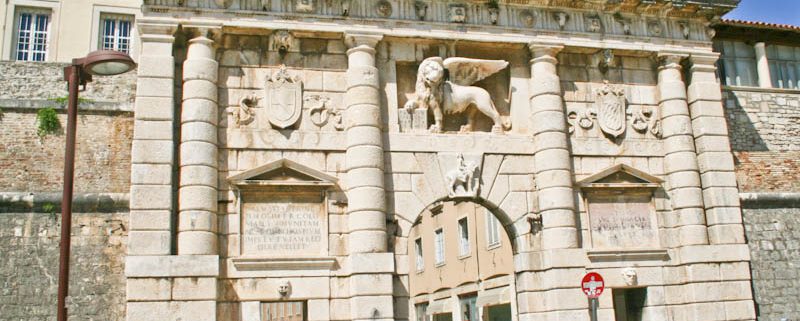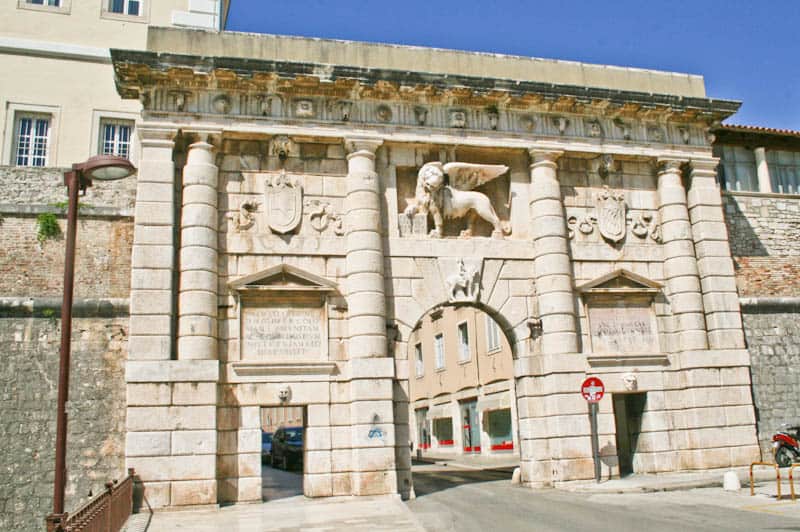
The history of Zadar is as fascinating as it is long! There’s evidence of a settlement in the area from as far back as the 9th century BC, although the town developed rather well under the control of the Romans when they conquered the region in the 2nd century BC – the layout of town, its city walls and gates, and important buildings were all constructed during this period.
From the end of the 9th century, Zadar fell under some sort of control by Croat rulers from the interior, where a Croatian state had emerged. This period saw a migration of Croat citizens to Zadar and the town became reasonably successful in trade. Its emergence caused Venice to see it as a threat, meaning that Zadar was attacked – and liberated – numerous times, before it was finally sold off to Venice by the Hungarian King Ladislas of Naples in 1409.

Venetian Rule and beyond
Under Venetian rule, Zadar was subjected to attacks from the Ottomans. City defences were fortified as the building of new walls commenced in the 16th century. Although economically the town stagnated somewhat – Zadar was only allowed to export to Venice – it grew culturally with a number of poets and writers emerging during this time.
Following the fall of Venice, there was a brief eight year rule under the French. Austria then conquered Dalmatia in 1813 and established Zadar as the administrative centre of Dalmatia. The town underwent an age of Italianisation with Italian becoming the main language. This period also saw an upsurge in some Slavic nationalisation in the town.
Zadar in the 20th Century
After World War I, Zadar was occupied by the Italian army in 1918 and then officially given – together with the islands of Lastovo and Palagruza – to Italy by the Treaty of Rapallo in 1920. This time, a period of forced Italianisation was put in place. Some of the population of Zadar moved to other places in Yugoslavia, and Italian citizens moved in.
During World War II (particularly during 1943-1944), the town was very heavily bombed by Allied forces. It suffered considerable damage (over 50% of the town’s buildings were destroyed) and loss of life. After the war, the town was given to Yugoslavia in 1947 (although it had been liberated by partizans in 1944).
Zadar after Croatian independence
After Croatia declared independence in 1991, Zadar suffered considerably during the ensuing four year war. The town was periodically shelled and was in fact cut off from Zagreb for some of this time (with the only link being via the island of Pag) as the surrounding area was occupied by rebel forces. Much of the area around Zadar was liberated in January 1993. However, some attacks on the town continued until the end of the war in 1995.
Zadar Today
These days, of course, the lovely town of Zadar is perfectly peaceful and a great place to visit.
